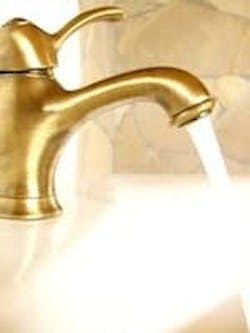Sorting Out Scale Prevention
About the author: Eric Yeggy is business development manager for the Water Quality Assn. Yeggy can be reached at [email protected] or 630.929.2539.
Scale not only clogs pipes and destroys valves, it also consumes energy. According to the U.S. Energy Information Administration’s Annual Energy Outlook 2012, more than 10% of the energy consumed in a home goes toward heating water.
Many consumers use energy-efficient products to save money. What many do not know is that energy-saving efforts can be negated if they have hard water and do not address scale.
Preventing scale can result in up to 24% energy cost savings over the lifetime of a gas tank-type water heater. Tankless heaters subjected to scaling may fail to function after a year and a half, resulting in a large dent in a customer’s wallet.
Scale buildup in a water heater wastes energy because scale is a poor heat conductor. Calcite, or calcium carbonate, has a thermal conductivity of about 5 watts per meter Kelvin, while most metals’ thermal conductivity is 10 to 50 times that. A material’s thermal conductivity directly relates to its ability to heat water. Therefore, scale buildup acts as insulation, making the heater work harder to achieve the same results.
Standards Issues
Certification options for anti-scale devices are limited unless they fit into a traditional certification category. Traditional softeners can be certified to NSF/ANSI 44 and effectively prevent scale because they remove the calcium and magnesium that cause it.
Today many “salt-free” conditioning and physical treatment devices also claim to reduce scale, but whether they are effective is hotly debated.
There is anecdotal evidence that some of these devices work under the right conditions. Identifying those conditions so they can be applied in a laboratory has proved to be a challenge. The core of the problem is a lack of understanding of how these devices work. Some manufacturers have admitted to the Water Quality Assn. (WQA) that they do not know how or why the products work, but claim they can prove they work if someone develops a reliable test protocol.
German standard DVGW W512, published in 1996 by the German Society of Gas and Water Specialists, was intended to provide procedures to evaluate the effectiveness of water conditioning devices for scale reduction. Few products have passed this protocol, however. It came under criticism in the U.S. because it involves testing under only one specific use pattern, without varying flow rate, not typical of the range of flow patterns in a home. It also does not address the high watt densities used with electrical tank-type water heaters in the U.S.
Evaluating Magnetic Treatment
Magnetic devices have long been at the center of the controversy and are an example of how confusing the issue can be. These devices have been accepted for decades in Europe, but were met with skepticism when introduced in the U.S.
WQA formed a Magnetic Task Force of key stakeholders in the magnetic device industry, but came away with more questions than answers. Research studies conducted by WQA, Clemson University and the South Dakota School of Mines and Technology failed to prove the devices worked. This led to consumer alerts and lawsuits in the U.S. Meanwhile, the technology remains popular in Europe, with installations ranging from government agencies to laundry applications.
Certification Solutions
Currently, anti-scale devices often are certified to NSF/ANSI 61 simply because there is no accepted performance standard for them in the U.S. This standard evaluates material safety through extraction testing, but does not address performance. Similarly, NSF/ANSI 372 is applicable to anti-scale devices for evaluation of lead content, but also does not address performance.
All of this is unfortunate because of the well-documented energy savings that come with the use of effective anti-scale devices. In spite of the importance of energy efficiency to consumers and the economy, consumers are unable to compare the wide variety of anti-scale technologies available.
There are several standards development efforts in progress. WQA is leading a task force to develop a certification standard for electrochemical demineralization devices that remove hardness similarly to water softeners, but do not require salt regeneration. This standard is focused on hardness and total dissolved solids (TDS) reduction, which results in calcium and magnesium removal. Like water softeners certified to NSF/ANSI 44, certified electrochemical demineralization devices will remove the cause of scale and are designed for use in hard water.
WQA also is working with an International Assn. of Plumbing and Mechanical Officials (IAPMO) task force to develop a standard focusing on scale reduction claims. This standard will apply to all technologies and make performance comparisons possible. Devices that do not reduce hardness or TDS will be able to qualify under the IAPMO standard if test results prove they reduce scale. The IAPMO task force has drawn upon the lessons from DVGW W512 to design a protocol that covers the range of use patterns in a home, while also addressing the high watt densities in electrical tank-type water heaters used in the U.S.
WQA also is working with a coalition of anti-scale manufacturers led by law firm Bracewell & Giuliani LLP. The coalition aims to achieve Energy Star status for anti-scale devices due to the energy savings these devices can deliver. Energy Star status can lead to tax incentives and economic benefits for consumers and the industry
Download: Here
